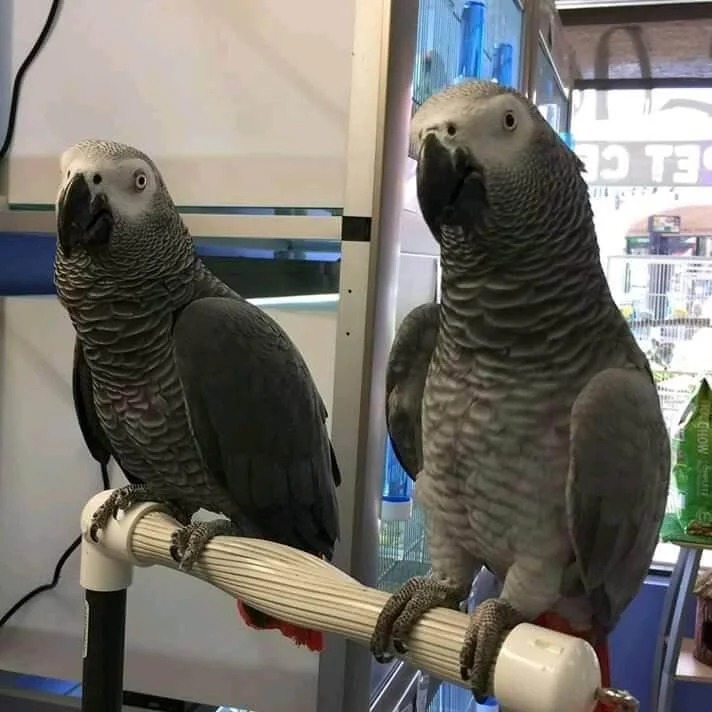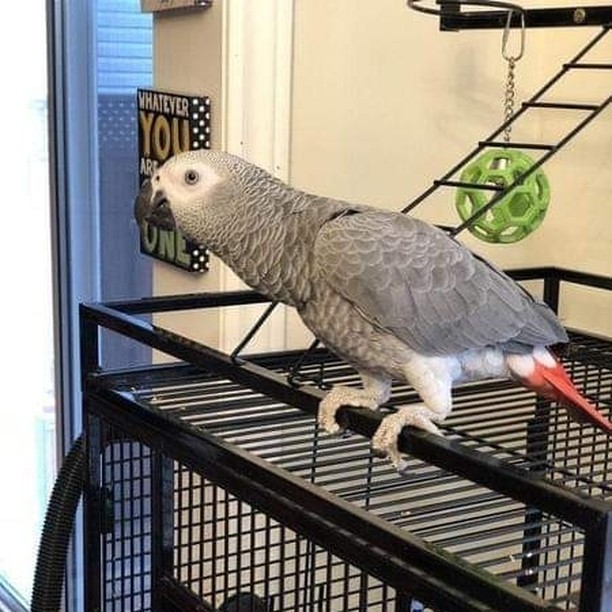The 10 Most Terrifying Things About Caring For An Grey Parrot
페이지 정보

본문
Caring for a Grey Parrot: A Comprehensive Guide
Grey parrots, especially the african greys for adoption Grey parrot, are renowned for their intelligence, social nature, and distinctive ability to mimic human speech. These fascinating birds make terrific buddies for those who comprehend their specific needs. The following guide highlights the necessary aspects of Caring for an grey parrot for a grey parrot, covering everything from environment and diet to psychological stimulation and healthcare.
Introduction of Grey Parrots
Grey parrots are belonging to the rain forests of West Africa and are highly smart animals with remarkable cognitive capabilities. They can live for approximately 60 years in captivity, making them a long-term commitment for potential owners. With a strong social structure in the wild, african grey parrot adoption parrots need adequate social interaction, mental stimulation, and an ideal living environment.
Table: Key Characteristics of Grey Parrots
| Characteristic | Details |
|---|---|
| Lifespan | 40-60 years in captivity |
| Size | 12-14 inches in length |
| Weight | 400-600 grams |
| Color | Grey with an unique red tail |
| Social Nature | Highly social, takes pleasure in interaction |
| Intelligence | Exceptional analytical skills |
| Vocal Ability | Excellent mimics, can develop large vocabularies |
Developing the Ideal Environment
An ideal home is critical for grey parrots. Here are a number of factors to consider when setting up their habitat:
Cage Requirements
- Size: Choose a cage that is at least 24 inches broad, 24 inches deep, and 36 inches high. Grey parrots require adequate area to move and extend their wings.
- Bar Spacing: Opt for a cage with horizontal bars spaced no more than 3/4 inch apart to avoid gets away or injuries.
- Place: Position the cage in a social area where your african blue parrot for sale can communicate with member of the family, but away from direct sunshine and drafts.
Perches and Accessories
- Variety of Perches: Include perches of varying sizes and textures, such as natural wood, to promote foot health.
- Toys: Provide numerous toys, including puzzle toys, ropes, and chewable products to keep them engaged.
- Food and Water Bowls: Ensure your grey parrot has access to fresh food and water every day, and use easily cleanable bowls.
Nutrition: Feeding Your Grey Parrot
A well balanced diet is essential for optimum health. A grey parrot's diet plan ought to consist of:
Pellets: High-quality pellets must comprise about 60-70% of the diet plan. Pick a brand formulated specifically for parrots.
Vegetables and fruits: Fresh vegetables and fruits must be used daily. Consider alternatives such as:
- Apples (without seeds)
- Carrots
- Broccoli
- Spinach
- Berries
Nuts and Seeds: Treats can include nuts and seeds but must not exceed 10% of the diet plan due to high-fat content.
Calcium Source: Calcium is crucial for bone health. Offer cuttlebone or calcium obstructs to support their dietary requirements.

Psychological Stimulation and Social Interaction
Grey parrots are understood for their intelligence, so providing an environment that cultivates mental stimulation is essential. Engage them with interactive play and social activities.
Methods for Mental Stimulation
- Training Sessions: Every day, hang around training your grey parrot to discover brand-new techniques or words. This not just provides mental exercise but also reinforces the bond between you and your bird.
- Toys: Rotate toys frequently to keep their environment intriguing and appealing.
- Social Interaction: Encourage interaction with relative or other family pets; grey parrots flourish on social dynamics.
Health Care: Regular Checkups
Routine veterinary care is necessary to ensure your grey parrot for sale african grey's health and longevity. Key health care practices consist of:
- Annual Checkups: Schedule yearly check outs with a bird vet for checkups, vaccinations, and to keep track of total health.
- Expect Signs of Illness: Be attentive to modifications in behavior, cravings, or droppings, as these can show health issues.
Frequently asked questions
1. How often should I clean my grey parrot's cage?
Cages should be cleaned daily to make sure hygiene. More comprehensive cleaning should be done weekly, including washing toys and perches.
2. Can grey parrots be left alone throughout the day?
While they can be left alone for a few hours, it is prevented to leave them separated for long durations. Preferably, they ought to have daily social interaction.
3. How do I train my grey parrot to talk?
Start by duplicating words clearly and consistently. Usage favorable support, such as treats, to motivate them to mimic expressions.
4. What should I do if my grey parrot loses plumes?
Plume loss can be due to a number of factors, including molting or tension. If you observe excessive plume loss, seek advice from a bird vet.

5. Are grey parrots great pets for novice bird owners?
Grey parrots need particular care and attention, making them better suited for knowledgeable owners. Nevertheless, anybody willing to find out can provide a suitable home.
Taking care of a grey parrot needs dedication, knowledge, and attention to their physical and emotional needs. By investing time in creating an enriched living environment, offering a well balanced diet plan, and guaranteeing routine veterinary care, owners can enjoy the colorful and interesting friendship that grey parrots offer. With the ideal approach, these smart birds can grow and become valued members of the household.
- 이전글How To Tell If You're In The Right Place To Go After Driving License Cost 25.04.29
- 다음글You'll Never Guess This African Grey Parrot Birds For Sale's Benefits 25.04.29
댓글목록
등록된 댓글이 없습니다.